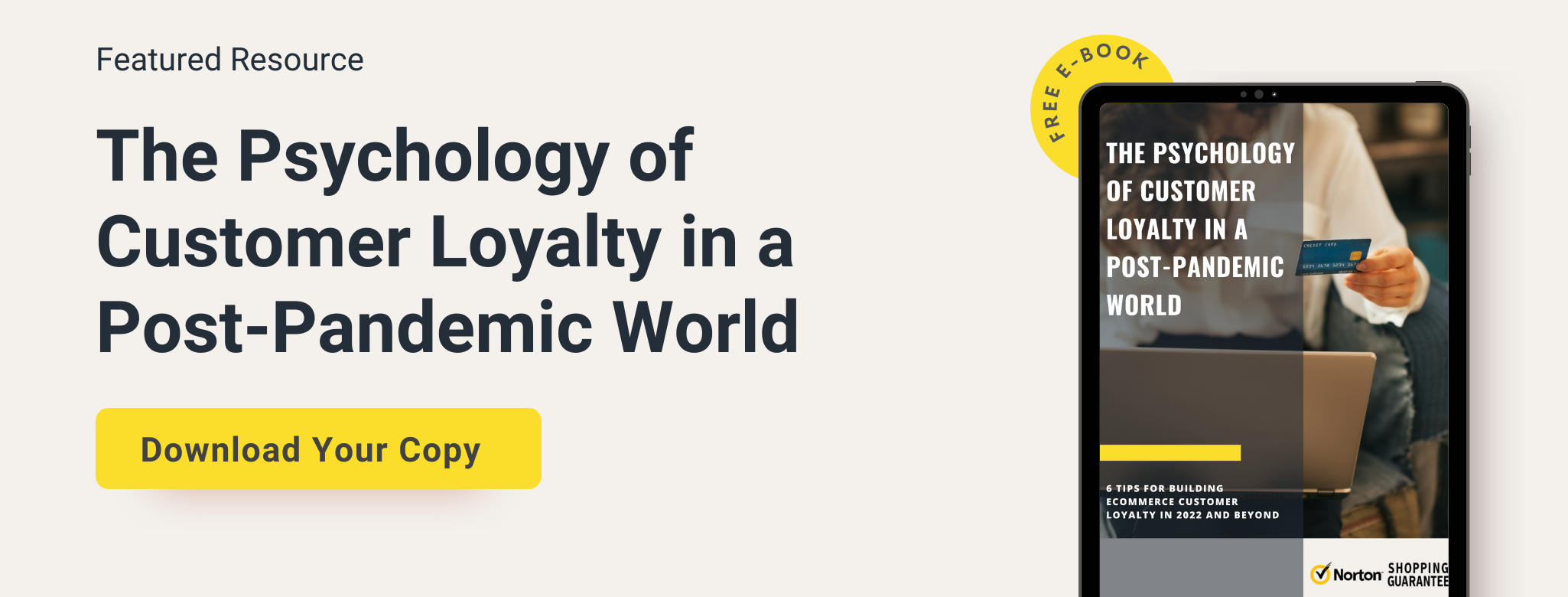

For the latest on ecommerce tips and best practices.
3 Ways Adding Value Can Improve the Ecommerce Customer Experience

It’s more cost effective to keep customers than attract new ones. Constantly acquiring new business can increase costs fivefold, while just a 5% increase in retention can boost profits by 20% or more. Customer retention is critical to raising the bottom line, and that means improving your ecommerce customer experience. Here’s our top tips on how to do it.
What is Ecommerce Customer Experience?
At its heart, ecommerce customer experience is about making customers feel valued. Buyers today have more options than ever before, from brick and mortar stores to a vast array of online vendors. What they buy, and at what price, is one consideration. But so too is where they decide to shop. All other things being equal, what makes a buyer choose one store over another? Often, that comes down to feeling good about where they spend their money.
This consideration is critical for retailers, because it’s the key to commercial success. Even stores with a negative reputation can retain customer loyalty through the value they add to individuals.
Some ecommerce stores leverage feel-good sentiment through business practices. Customers like to feel like they’re contributing to wider social good through their spending. But no amount of goodwill can outperform the value of providing a great customer experience.
How to Improve Customer Experience on Your Ecommerce Website
Good ecommerce customer experience starts with the basics. That means a website that loads quickly, is easy to navigate, and provides a seamless checkout process. This is the bare minimum that online consumers expect from retailers. You won’t win any awards for having the fastest website, but you will lose customers if you have the slowest.
Good customer experience is all about minimizing friction and stress, and when it’s working well it’s almost invisible. If your customers pay attention to these factors, it usually means there’s a problem.
The statistics speak for themselves. Half of consumers expect a page to load in under 2 seconds. Almost as many will abandon a site completely if load times exceed 3 seconds. Just a second’s difference can reduce conversions by 7%. Customers won’t tell retailers that their website is too slow. They’ll just spend their money elsewhere.
The first step to improving ecommerce customer experience should be a thorough site audit. If you're not sure where to start, a great free tool to use is DigitalTrust. With DigitalTrust you can easily scan your website and instantly receive actionable ways to optimize your site. This can help you answer questions like: Is it appealing to look at and intuitive to use? Does the search function work well? How fast do the pages load, and how long is the checkout process? For online merchants, fewer clicks means more money. It shouldn’t take more than 20 clicks from landing on a site to find a product and complete the checkout process.
3 Ways to Add Value to the Customer Experience
Having the fastest, most intuitive website is an essential component of good customer experience. Without it, online retailers will struggle to compete. However that’s only the start of providing an exceptional ecommerce customer experience. Retailers also need to deliver great customer service. Here’s how the top merchants do it.
#1. Personalize the shopping experience
Personalizing buyers’ experiences on ecommerce sites can drive sales exponentially. Retailer Black Halo increased revenue by $20,000 in a single month through personalized customer service.
Some examples of personalizing your storefront include:
- Welcoming returning customers by name
- Tailoring display content, ads, and offers based on purchasing history
- Using location and browsing history to make smarter suggestions
#2. Take care of your customers
Giving customers a seamless experience isn’t just important before sales. Retailers also need to provide excellent customer service when things go wrong. Making it effortless to modify or cancel orders and return products is essential. Over 60% of consumers read the returns policy before making a purchase with a new ecommerce retailer.
The Norton Shopping Guarantee can help retailers by adding an extra layer of protection to every order. Our independent guarantee ensures shoppers are covered if their product doesn’t arrive or fails to live up to expectations. Displaying the Norton Shopping Guarantee trust badge increases confidence and drives more conversions.
Supplement brand, Life Extension lifted conversions by 11.2% after adding the Norton Shopping Guarantee to their customer experience. Feedback showed that with the guarantee, over 80% of customers were likely to shop at Life Extension again. Customers were extremely appreciative of the benefits the guarantee provided.
#3. Offer after-sales support
Providing product support can improve customer experience and minimize returns at the same time. It’s also a good way for ecommerce retailers to compete with brick and mortar stores. Three quarters of shoppers say that product knowledge is a top reason they prefer to shop in store rather than online.
What does product support look like online? It could be usage instructions on the product page, instructional videos, or blog posts. Or even emails sent to new purchasers after delivery. Tying educational material to inbound marketing campaigns can attract new consumers. It can also form an important entry point into a retailer’s sales funnel.
Even More Ways to Improve Ecommerce Customer Experience
Anything a vendor can do to make the customer’s experience faster, easier, and more personal can drive sales and increase the bottom line. Give shoppers what they want and they’ll keep coming back. Some examples include:- Offer free shipping and returns
- Simplify your checkout process for faster ordering
- Curate gift guides to make seasonal purchases easier
- Provide loyalty and referral programs to incentivize repeat business
How to Get Feedback from Customers
There are many ways for ecommerce stores to discover and anticipate customer needs. From examining page bounce rates and abandoned carts, to emailing customers directly before and after sales. As well as soliciting product reviews, smart ecommerce brands also ask for feedback about the store itself.
Since the onset of the COVID-19 pandemic, more consumers are buying online than ever before. They’re also purchasing from a wider range of online retailers, as even the biggest brands struggle to cope with supply chain constraints. That makes 2022 a great time for ecommerce retailers to attract new buyers. By improving their ecommerce customer experience, they can turn more one-time buyers into loyal repeat consumers.
Stay in the know
Subscribe to the Norton Shopping Guarantee blog and receive the latest in ecommerce best practices.




-1.png)